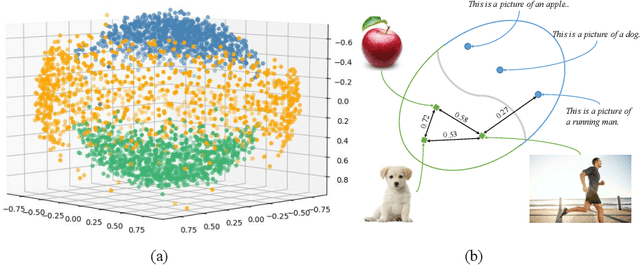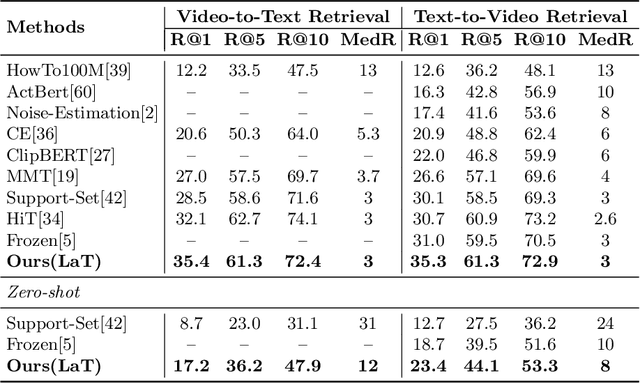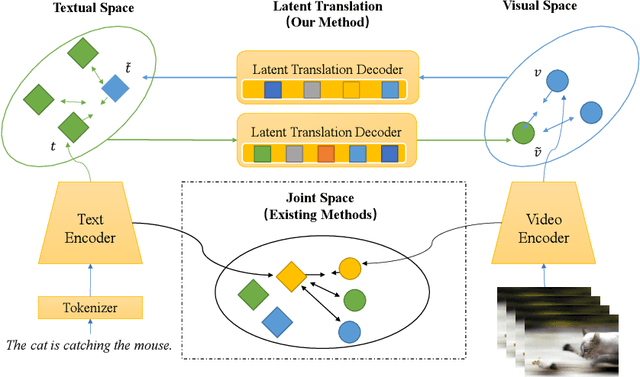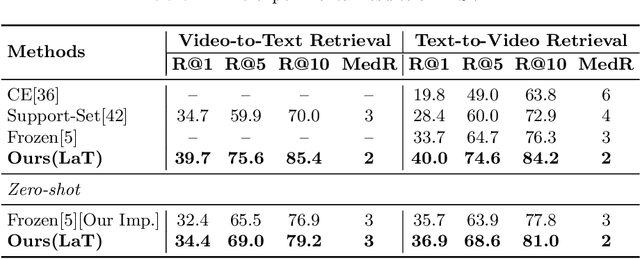Mengying Hu
LaT: Latent Translation with Cycle-Consistency for Video-Text Retrieval
Jul 11, 2022



Abstract:Video-text retrieval is a class of cross-modal representation learning problems, where the goal is to select the video which corresponds to the text query between a given text query and a pool of candidate videos. The contrastive paradigm of vision-language pretraining has shown promising success with large-scale datasets and unified transformer architecture, and demonstrated the power of a joint latent space. Despite this, the intrinsic divergence between the visual domain and textual domain is still far from being eliminated, and projecting different modalities into a joint latent space might result in the distorting of the information inside the single modality. To overcome the above issue, we present a novel mechanism for learning the translation relationship from a source modality space $\mathcal{S}$ to a target modality space $\mathcal{T}$ without the need for a joint latent space, which bridges the gap between visual and textual domains. Furthermore, to keep cycle consistency between translations, we adopt a cycle loss involving both forward translations from $\mathcal{S}$ to the predicted target space $\mathcal{T'}$, and backward translations from $\mathcal{T'}$ back to $\mathcal{S}$. Extensive experiments conducted on MSR-VTT, MSVD, and DiDeMo datasets demonstrate the superiority and effectiveness of our LaT approach compared with vanilla state-of-the-art methods.
 Add to Chrome
Add to Chrome Add to Firefox
Add to Firefox Add to Edge
Add to Edge